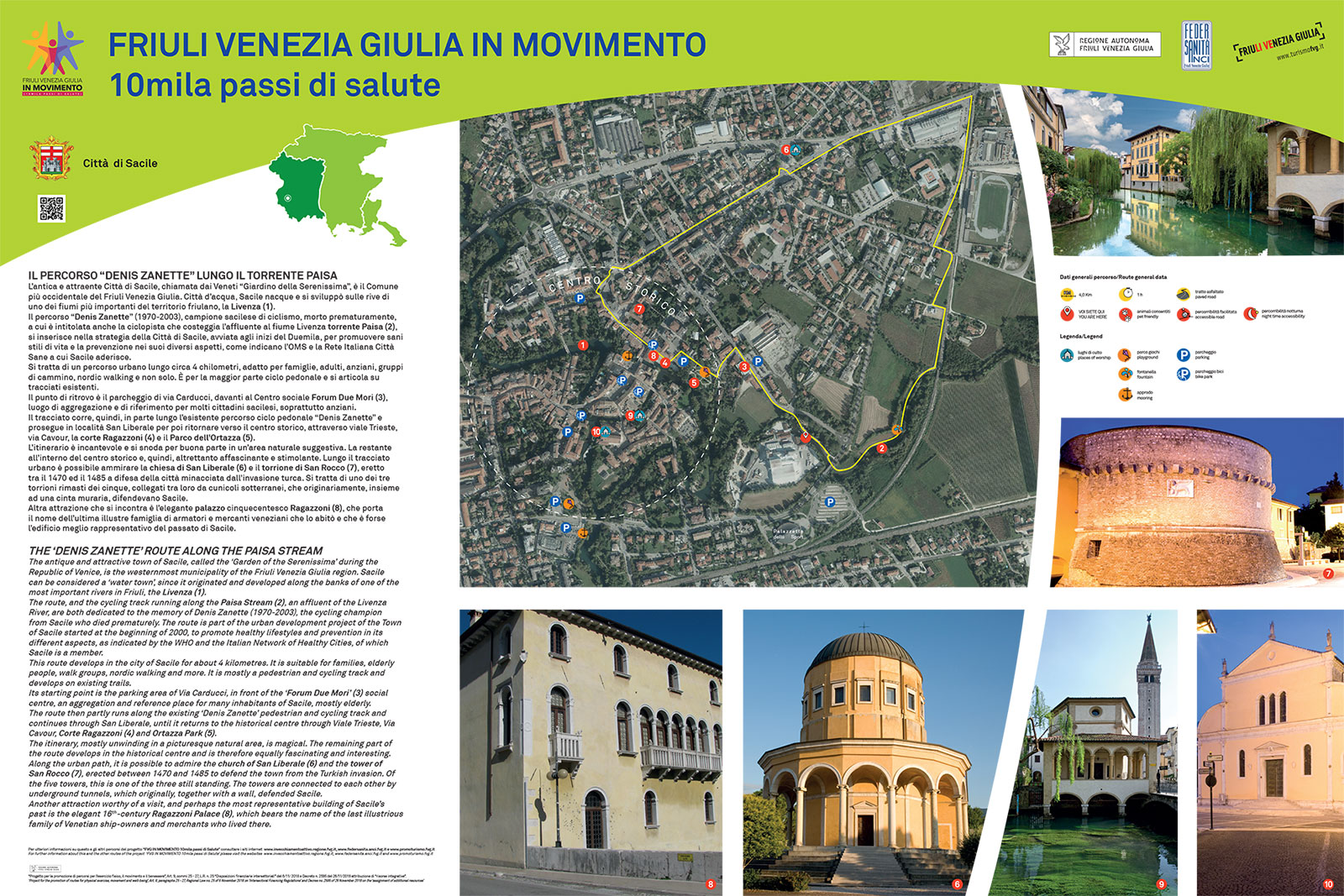The antique and attractive town of Sacile, called the ‘Garden of the Serenissima’ during the Republic of Venice, is the westernmost municipality of the Friuli Venezia Giulia region. Sacile can be considered a ‘water town’, since it originated and developed along the banks of one of the most important rivers in Friuli, the Livenza (1).
The route, and the cycling track running along the Paisa Stream (2), an affluent of the Livenza River, are both dedicated to the memory of Denis Zanette (1970-2003), the cycling champion from Sacile who died prematurely. The route is part of the urban development project of the Town of Sacile started at the beginning of 2000, to promote healthy lifestyles and prevention in its different aspects, as indicated by the WHO and the Italian Network of Healthy Cities, of which Sacile is a member.



